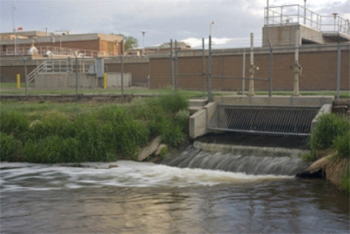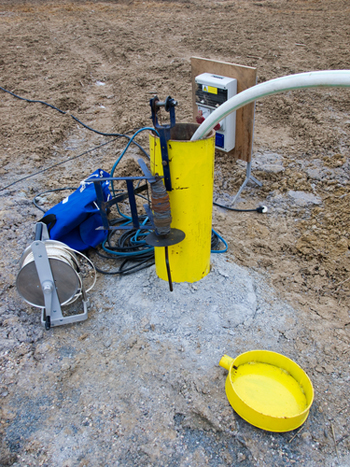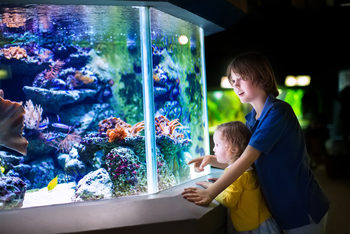In addition to the treatment of water for human consumption, activated carbon is also widely used in other water treatment applications. These are often where contaminants need to be removed from water, either before its use or before returning to water courses. Examples include
Wastewater treatment
Activated carbon is widely used for the removal of undesirable compounds from industrial wastewaters prior to discharge, or to remove toxic compounds from specific wastewater streams to protect the biology. Endocrine disruptor compounds removal and other trace contaminants removal from municipal wastewaters using activated carbon are becoming standard in Europe. In recent years some wastewaters were treated with activated carbon for reuse in industrial processes.
Groundwater remediation
If groundwater is contaminated with organics, or heavy metals, usually through old polluting industrial processes or agricultural use of chemicals, the water may need to be treated before any further use. Activated carbon plays an important role in this and will normally be used to remove any volatile organic chemicals present.
Aquaria
Activated carbon is commonly used in aquaria to remove a wide range of potential contaminants. These include chlorine and disinfection byproducts that may be present in tap water, medicines, and undesirable colours and odours.
Generally a carbon of good purity will be required to ensure that impurities present in the activated carbon do not leach into the water. The carbon is used with a range of other measures to ensure that the balance of chemicals in the water is healthy.
.
Landfill leachate treatment
Landfill leachate treatment is often done with a biological treatment system in combination with an activated carbon treatment step to comply to the strictest legal norms. Granular activated carbon is a proven technology to reduce Chemical Oxygen Demand (COD), Adsorbable Organic Halogens (AOX), pesticides, and other organic substances from landfill leachate. The chemical composition and content of landfill leachate can vary greatly between landfill sites, and depends mainly on the age of the landfill and the type of waste disposed. The COD levels after the installed biological treatment system usually range between 500mg/l and 1,500mg/l and will influence the overall carbon consumption.
Swimming pools and ponds
Halogens such as chlorine are usually used where disinfection of swimming pools and other leisure facilities such as hot tubs is required. In this process, chlorine can react with organics to produce disinfection byproducts such as chloramines and THMs. In this case, use of activated carbonare increasingly required to remove the undesirable chemicals in the system.
Mercury removal
In some parts of the world, mercury amalgam is still used in dental surgeries. If waste is washed into the municipal drains, this can result in spikes in mercury contamination, which the water works may have to take special measures to deal with. For this reason, dental surgeries often have waste water filter systems that incorporate special grades of activated carbon to remove the mercury.
